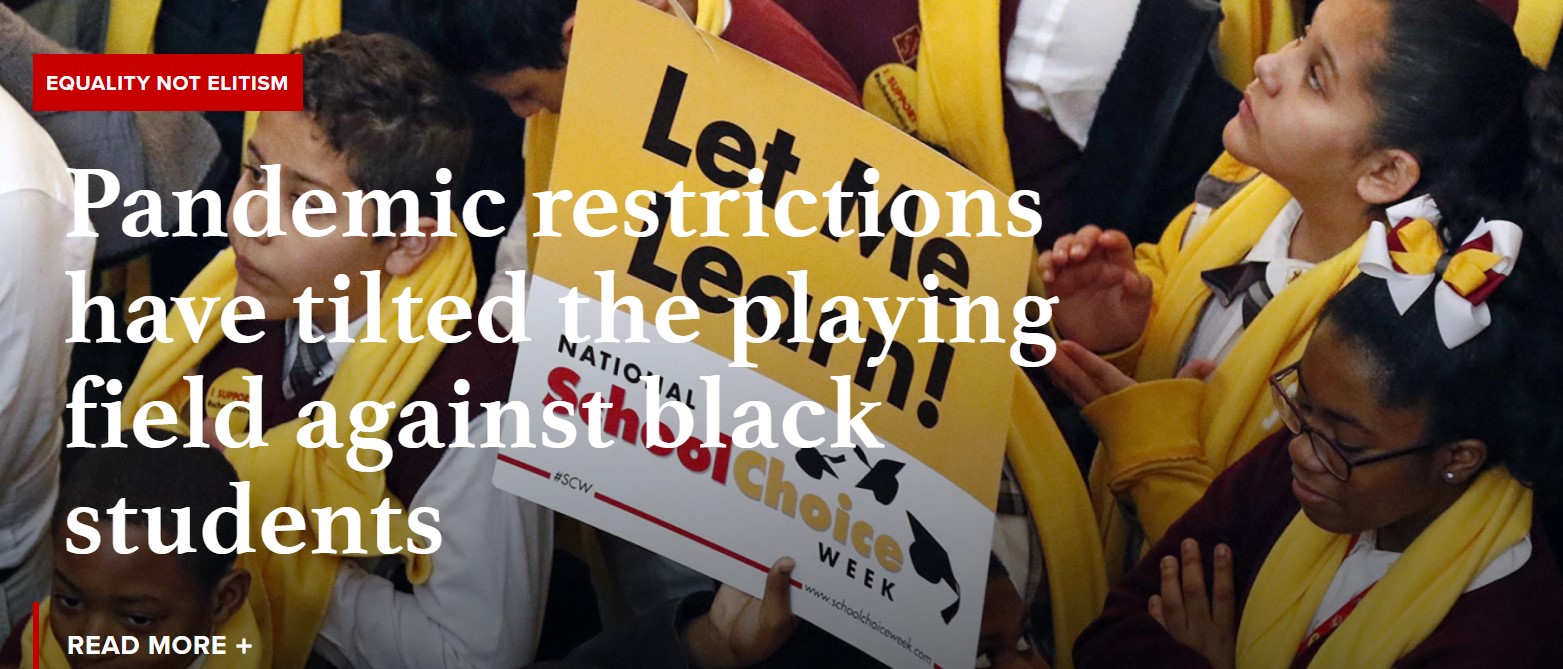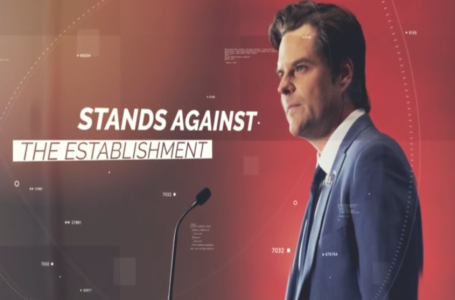Pandemic restrictions have tilted the playing field against black students — school choice can level it again

Screenshot Washington Examiner
As our nation continues to grapple with issues of race and equality, it’s time for Washington to discard the political theater that so often dominates the conversation. Instead, we must seek solutions to the real problems staring us in the face — starting with what we believe is the civil rights issue of this generation: education.
As black men who grew up in the deep South, we are all too familiar with discrimination and setbacks. Yet today, we are both living our dreams, serving in Congress.
One thing is certain: Neither of us would be where we are today if not for the blessing of a strong education. That’s why we support expanding access to school choice to ensure all children receive a quality education, providing them with a launching pad for success.
The sad truth is that our nation is not where it should be on education — not even close. Despite the remarkable racial progress that has been made in recent decades, disparities within education continue to plague youth. In 2019, only 18% of black fourth graders and 23% of Hispanic fourth graders were proficient in reading, compared with 45% of their white peers. This is unacceptable by any standard.
While these disparities are by no means new, they have become even more evident throughout the COVID-19 pandemic, as persistent school closures and learning interruptions have failed children. Research shows that black and Hispanic students lost an average of six months of learning, 33% more than their white peers. Likewise, students from families making less than $25,000 a year lost an average of seven months of learning, 75% more than students from families making over $75,000.
This phenomenon can be partially explained by wealthy families having the ability to enroll their children in schools with in-person learning, while the most vulnerable students have been trapped in school districts controlled by teachers unions resisting efforts to return to in-person instruction. In Chicago’s public school district, where a teachers union went on strike earlier this year, 83% of students are either black or Hispanic . While these students suffered from yet another school closure, students only a few miles away in wealthy suburbs had already returned to in-person learning.
This is not 2020. We now have data showing that schools are one of the safest places for our children. COVID transmission rates in schools are actually lower than in their communities at-large. And that’s to say nothing of the mental health crisis raging within our nation’s teenage population as students have become more and more isolated. It’s long past time that schools reopened, and parents are understandably frustrated. So it’s no wonder that, at a time when parents’ voices have been silenced, support for school choice has reached an all-time high. Recent polling shows that 74% of voters, including vast majorities of Republican, Democratic, black, Hispanic, and white Americans, want expanded education options that reflect the diversity of the nation’s students.
Policymakers, parents, and educators are at a pivotal moment to address these challenges and leave our education system better than we found it. If we want a nation in which our children’s destiny is not determined by their zip code, we must act now.















